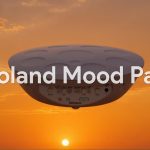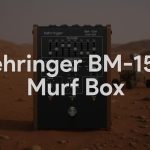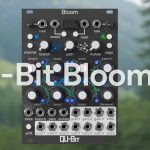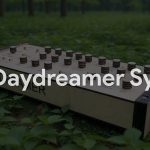The Interface Modules That Actually Understand Audio Engineering
Most Eurorack interface modules treat level conversion like a simple math problem—scale the voltage and call it done. But NANO Modules’ ST IN & ST OUT approach the challenge with the understanding that proper interfacing involves impedance matching, headroom management, and signal conditioning. These aren’t just voltage converters; they’re audio engineering tools designed by people who understand what line-level signals actually need.
At $169/€135 each, these Spanish-designed modules deliver professional interface capabilities with thoughtful extras that transform routine signal routing into creative opportunities.
ST IN: Bringing the Outside World Inside
The ST IN solves the fundamental problem of getting external gear into your modular system without sonic compromise. Two balanced 6.3mm inputs provide proper impedance matching for hardware synths, drum machines, and other line-level sources, with gain ranging from -∞ to +30dB for handling everything from weak consumer signals to hot professional outputs.
ST IN Core Features:
- Dual balanced 6.3mm line inputs for stereo operation
- -∞ to +30dB gain range with dedicated control knob
- Built-in envelope follower with three time ranges (slow/mid/fast)
- One-knob tilt EQ for frequency shaping
- Volume fader for level control
- Peak LED meter with clipping indicator
- DC-coupled design (0dB = 10Vpp)
- 6HP format
The envelope follower deserves special attention—it’s linked to the gain control and converts amplitude into CV signals. This transforms the ST IN from a simple interface into a dynamics processor, allowing external audio to control modular parameters directly.
ST OUT: From Modular to Professional
The ST OUT handles the equally important task of getting modular signals back to the outside world with professional quality. Two balanced 6.3mm outputs provide stereo connectivity with the clarity and punch that professional mixing demands.
ST OUT Core Features:
- Dual balanced 6.3mm line outputs for stereo operation
- Volume fader for output level control
- Peak LED meter for level monitoring
- One-knob tilt EQ for final tone shaping
- Switchable drive circuit (soft/hard analog saturation)
- Dedicated headphone output with volume control
- 6HP format matching the ST IN
The drive circuit adds analog saturation—switchable between soft and hard modes—that can add warmth or aggressive character to modular signals before they hit your mixer or audio interface.
The Envelope Follower Advantage
The ST IN’s envelope follower transforms it from a passive interface into an active signal processor. With three selectable time ranges, it can track everything from percussive transients (fast) to slowly evolving pad textures (slow). This CV output can control filters, VCAs, or any voltage-controlled parameter, making external audio an active modulation source.
This feature alone justifies the ST IN’s existence beyond simple level conversion. Suddenly drum machines become trigger sources, external synth dynamics control internal processing, and any line-level audio becomes potential modulation material.
Tilt EQ: Simple but Effective Tone Shaping
Both modules include one-knob tilt EQ—a simple but powerful tone-shaping tool that simultaneously cuts one frequency range while boosting another. Turn left for warmer, bass-heavy character; turn right for brighter, more present sound. It’s the kind of broad-stroke EQ that’s perfect for interface modules where you need quick tonal adjustments without detailed frequency control.
This EQ placement is particularly smart on the ST OUT, where it functions as final tone shaping before signals leave your modular system. It’s like having a mastering EQ built into your output stage.
Professional Metering and Monitoring
Both modules include peak LED meters with clipping indicators—essential for maintaining proper gain staging when interfacing between different audio domains. The visual feedback prevents the kind of level mismatches that can cause distortion or poor signal-to-noise ratios.
The ST OUT’s dedicated headphone output with volume control is particularly valuable for modular systems, where monitoring is often an afterthought. Having dedicated headphone monitoring at the output stage makes level checking and sound evaluation much more practical.
DC-Coupled Design Philosophy
The ST IN’s DC-coupled design (0dB = 10Vpp) ensures that slow-moving control voltages pass through unchanged, making it suitable for both audio and CV applications. This dual-purpose capability means you can use the ST IN to bring external CV sources into your system, not just audio signals.
This technical choice reflects understanding of how modular systems actually work—the boundary between audio and control signals is often fluid, and interface modules should accommodate both without compromise.
Drive Circuit Character
The ST OUT’s switchable drive circuit provides two flavors of analog saturation. Soft mode adds subtle warmth and harmonic enhancement, while hard mode delivers more aggressive character for when you want obvious saturation effects. This analog processing adds life and character that purely clean interfaces can’t provide.
The drive circuit placement at the output stage means it affects your entire modular mix, making it perfect for adding cohesive character to complex patches or entire performances.
Spanish Engineering Sensibility
NANO Modules brings Spanish design sensibility to interface modules, focusing on practical functionality with creative extras. The combination of professional specifications with musical features like envelope followers and drive circuits reflects understanding that interface modules should enhance creativity, not just enable connections.
At €135 each, these modules compete directly with more expensive alternatives while offering features that justify their cost through practical utility and creative potential.
Practical System Integration
The ST IN & ST OUT work perfectly as a matched pair for creating complete interface solutions. Use the ST IN to bring external instruments into modular processing chains, then use the ST OUT to send the processed results back to mixers, recorders, or PA systems with professional quality.
The 6HP format for each module means a complete stereo interface solution fits in 12HP—reasonable space allocation for the comprehensive functionality provided.
Value Proposition: Professional Features at Accessible Prices
At $169/€135 each, the ST IN & ST OUT deliver professional interface capabilities typically found in more expensive modules. The envelope follower, drive circuits, tilt EQ, and proper metering transform routine level conversion into creative opportunities.
Consider the cost of separate envelope followers, EQ modules, and saturation processors, and the integrated approach becomes compelling beyond simple convenience.
The Missing Link Solutions
The ST IN & ST OUT solve problems that many modular enthusiasts face but few manufacturers address comprehensively. They’re the missing link between modular systems and the rest of the audio world, designed by people who understand both domains.
Whether you’re using modular as an effects processor for external instruments, integrating modular elements into traditional productions, or simply need professional-quality monitoring and interfacing, these modules provide complete solutions rather than partial fixes.
Ready to bridge the modular-to-professional divide? The NANO Modules ST IN & ST OUT at $169/€135 each transform routine interfacing into creative opportunities while maintaining the professional standards your music deserves.
About Me
Hi, I’m Canoy Dang. I grew up in Granada and now living in Málaga, in the south of Spain. Sound has always played a central role in my life — from early home recordings to the deeper, ongoing exploration of the modular synth world. Modular, semi-modular, and desktop synthesizers have become my main tools for expression, experimentation, and sometimes, simply for getting lost in the process.






